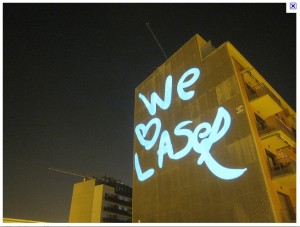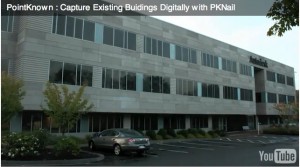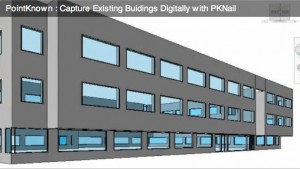Archive for category BIM
When I say BIM what do you think? The US Army Corp of Engineers thinks Revit
Posted by Jim Foster in Adoption, Autodesk, BIM, Revit on December 2, 2010
While I am no shill, I just pasted this straight from the wire. Info you can use? Maybe/Maybe not, but if your trying get on schedule with the US Government for projects, I’d say knowing Revit is better than not knowing it, and here’s another data point why.
USACE Selects Autodesk Software Solutions for Mission Critical Applications
LAS VEGAS, Nov 29, 2010 (BUSINESS WIRE) — Autodesk University:
Autodesk, Inc. /quotes/comstock/15*!adsk/quotes/nls/adsk (ADSK 36.53, +1.24, +3.51%) , a world leader in 3D design, engineering and entertainment software, today announced that the U.S. Army Corps of Engineers (USACE), has signed a multi-flex, enterprise license agreement for Autodesk products and Autodesk-related services and training. The contract value of the deal is $6 million over a three year period and includes access to the following Autodesk products: the Autodesk Revit family of products; AutoCAD Civil 3D software; and Autodesk Navisworks software products, among others.
“We are extremely pleased to further strengthen our long-standing relationship with the USACE with this agreement,” said Bill Goodson, vice president, North American public sector and utility sales, at Autodesk. “Autodesk software plays a vital role in helping USACE provide quality and responsive engineering services to over 37,000 employees in 90 countries worldwide. This agreement ensures USACE will have full access to the latest innovative Building Information Modeling (BIM) software tools and professional services to support its national defense mission. The flexible and concurrent licensing Autodesk is offering the USACE will provide better asset management and version control.”
Autodesk Software Products: Mission Critical Solutions for USACE
As BIM-based designs are required by the General Services Administration (GSA), the USACE now requires a BIM-based design approach for all vertical military construction (MILCON) projects in fiscal year 2010 and beyond. With today’s announcement, the USACE will now have complete access to Autodesk’s BIM family of products, including Autodesk Revit Architecture software and Navisworks software products. By having access to the BIM products, USACE personnel — who deal with managing building construction, operations and maintenance — will have the software tools and training necessary to take better advantage of the 3D building models being delivered by design contractors.
Exchange BIM : Bid and Win : Autodesk giving it away : Adword model coming to BIM?
Posted by Jim Foster in Adoption, BIM, Marketing on December 1, 2010
 Okay so this might be premature but read today under Autodesk Broadens its Reach in the Wall Street Journal about how Autodesk is creating and marketing consumer products, where it currently holds no cache. Mention Autodesk to people outside of the AEC industry and they look at you much like a dog who’s heard a high pitch whistle. Autodesk created Sketchbook for the ipad and iphone. They also released Homestyler, which is free. The most expensive version of Sketchbook goes for $7.99. Now if you are not selling stuff to make money, how else can you do it? Let’s look at the popular models – you are a lead generation tool, allow advertising or create a marketplace and you take the vig on the transaction. If I am one, if not the biggest purveyor of 2D CAD and 3D Modeling Software I have an opportunity, an opportunity to hook into software that was not available when it was just 2D lines, but 3D objects, let’s think about it. One of the D’s, ‘Cost’, how is that driven through the system, well, mostly by quantity take offs, and creating a liquid marketplace that allows the quantity take offs, or actual fabrication to be bid on creates transparency/liquidity. Allowing for brand name components to be swapped into a building model, making it more of a building information model, allows it to be spec’d during the design phase, what’s that worth as a vendor? Even Microsoft is getting in on this with their release of Microsoft Hohm, energy data based on location, tax, records, etc. When looking at specific retrofits there is a frame with ‘local professionals.’ Cannot be long until they are offering branded insulation, (owens corning) , and Energy Star appliances.
Okay so this might be premature but read today under Autodesk Broadens its Reach in the Wall Street Journal about how Autodesk is creating and marketing consumer products, where it currently holds no cache. Mention Autodesk to people outside of the AEC industry and they look at you much like a dog who’s heard a high pitch whistle. Autodesk created Sketchbook for the ipad and iphone. They also released Homestyler, which is free. The most expensive version of Sketchbook goes for $7.99. Now if you are not selling stuff to make money, how else can you do it? Let’s look at the popular models – you are a lead generation tool, allow advertising or create a marketplace and you take the vig on the transaction. If I am one, if not the biggest purveyor of 2D CAD and 3D Modeling Software I have an opportunity, an opportunity to hook into software that was not available when it was just 2D lines, but 3D objects, let’s think about it. One of the D’s, ‘Cost’, how is that driven through the system, well, mostly by quantity take offs, and creating a liquid marketplace that allows the quantity take offs, or actual fabrication to be bid on creates transparency/liquidity. Allowing for brand name components to be swapped into a building model, making it more of a building information model, allows it to be spec’d during the design phase, what’s that worth as a vendor? Even Microsoft is getting in on this with their release of Microsoft Hohm, energy data based on location, tax, records, etc. When looking at specific retrofits there is a frame with ‘local professionals.’ Cannot be long until they are offering branded insulation, (owens corning) , and Energy Star appliances.
The building model becomes the grocery store and there are slotting fees, fees to put your product on the end cap, fees to put it on a particular shelf, etc. So fees, hmmn, to have a certain level of prominence in the marketplace, sound familiar? Google’s Adwords. Understand that the supermarkets were there first and are most excellent at retail, and the companies involved in selling through supermarkets, are also most excellent in, well, marketing, think P&G. Homestyler, allows you to choose between “20,000+ generic and branded items”, cue branded items, and right from the web site:
Autodesk Homestyler automatically compiles a list of the products in your new home design, including information such as brand name, model, color, and more. It tallies approximate quantities for counter-tops, flooring, baseboards, and paint, so you’ll know exactly the amount of materials to buy. Simply print your list and bring it with you when you head out to shop.
Dupont (counter-tops), Sherwin Williams (Paint), Dacor (Appliances) , FLOR (Carpeting) are already prominently featured.
 Now this seems awfully like the tip of the spear, before Autodesk partners with a major shopping site, Sears? / Amazon? for fulfillment and to get appliances etc. into your house. And if you were Sears what would you pay to be the partner or get slotted to be top dog in this universe. Autodesk has stated that they want to get over 50 million customers in 2 years, if you are essentially giving away the software, what’s the point? Well, guess what, besides having a kid, the #1 reason for you to go on a spending binge is buying a new house, or conversely redesigning your existing one and for the marketing savvy folks being first in is a big deal as they can shape and form your opinions. Start thinking of the Autodesk Seek Website as the market or Google’s 3D Warehouse.
Now this seems awfully like the tip of the spear, before Autodesk partners with a major shopping site, Sears? / Amazon? for fulfillment and to get appliances etc. into your house. And if you were Sears what would you pay to be the partner or get slotted to be top dog in this universe. Autodesk has stated that they want to get over 50 million customers in 2 years, if you are essentially giving away the software, what’s the point? Well, guess what, besides having a kid, the #1 reason for you to go on a spending binge is buying a new house, or conversely redesigning your existing one and for the marketing savvy folks being first in is a big deal as they can shape and form your opinions. Start thinking of the Autodesk Seek Website as the market or Google’s 3D Warehouse.
While we can argue the big brotherly approach of all this, in truth, if you have gone to the trouble of designing your own kitchen, this integration of design/shop/fulfillment can be a blessing instead of plugging in a generic cook top, wondering if the dimensions are right, wondering what the warranty info is, you could have right there, good right? Scary that the whole world knows you own 6 Burner Jenn Air Cook Top? Well you can decide for yourself. But this type of integration is coming and with it, standard marketing practices that have been around for a long time, tracking purchases? who do you think was there first with loyalty cards, most likely your local grocery store, and don’t think they did not turn around and sell that information. Just know it exists and enjoy the abundance of free software that’s around that can make your life easier, also know that someone somewhere is paying for it.
Reality Capture #2 on Autodesk Labs Hit List : Project Galileo to join other tools. BIM
Posted by Jim Foster in 3D, Autodesk, BIM, Built Environment, Point to Point Laser Technology, Revit on November 30, 2010
 As reported by Matt Ball, Brian Mathews, the Autodesk VP in charge of Autodesk Labs, gave a media briefing updating ‘his Seven Technology Trends lecture with example projects.’ Reality capture or as otherwise stated, turning analog into digital, being #2 on the hit list. So capturing the Built Environment is starting to get serious traction, and while I hesitate to use the word traction, well, that’s what its getting.
As reported by Matt Ball, Brian Mathews, the Autodesk VP in charge of Autodesk Labs, gave a media briefing updating ‘his Seven Technology Trends lecture with example projects.’ Reality capture or as otherwise stated, turning analog into digital, being #2 on the hit list. So capturing the Built Environment is starting to get serious traction, and while I hesitate to use the word traction, well, that’s what its getting.
Previously in the conversation people would talk about all the wonderful things software can do for buildings, then you realize the majority of construction is in the built environment and it becomes, well just give me the building, or at lest the digital equivalent of the building and look at the wonderful things software can do, however, most presupposed the digital equivalent of the building. Not anymore, more and more companies are releasing software and tools to capture the built environment, or call it reality capture if you like, but soon there are going to be a lot more tools on your shelf.
Autodesk has released, Project Photofly . and will soon release Project Galileo which according to its splash page, “is an easy-to-use planning tool for creating 3D city models from civil, geospatial and building data, and 3D models.” Plus Autodesk has release shape extraction tools from PointClouds directly inside of AutoCAD. Rand Technology/Avatech/Imaginit hybrid has released PointCloud manipulation tools inside of Revit and we are in the final beta of PKNail, a PPLT (Point to Point Laser Technology) system that allows a user to drive Revit commands and enter dimensional data directly from a range finder allowing a user to build a Revit model in the field. Plus we recently saw the beautiful kinect hack allowing a user to capture and even measure 3D video. I can’t say which technology or mixture of technologies will work best for you, but your job is going to get easier.
Sketch Up vs Revit : Round 2 : Autodesk and Revit scores with Vasari
Posted by Jim Foster in 3D, Autodesk, BIM, New Technologies on November 15, 2010
Is it fair to continually compare Revit and SketchUp as essentially they were doing two different things, Conceptual Modeling as compared to Building Modeling, not anymore with the release of Project Vasari, alive and available for download. It is available as a preview and free until May 15, 2011. I will be downloading it shortly, and from the looks of it and as posted by other bloggers, like the Revit Kid and David Light here are some of the features:
- Stripped Down Revit User Interface
- Built in Energy Modeling
- Produce conceptual models using both geometric and parametric modeling functionality
- Cross Compatibility between Revit 2011 and Vasari files.
In fact, I even suggest to jump over to David’s post to get a more in depth look at Vasari and its features. However, what has been apparent to me and others was for Autodesk to round out their line up with a conceptual modeling tool, and with something that had the ease of SketchUp. Why? Because I would speak to architects who had never even fired up any CAD package who said they are now using SketchUp, plus with idea of a Revit Light you can create an easy entry point for users rather than be bamboozled by full Revit UI/Ribbon/Feature smorgasbord. In addition to the easy entry point models created in Vasari can be opened in Revit 2011 and visa-versa so going from concept to modeling in Revit Architecture should be easier, conceivably, although I have not seen that work flow.
I imagine pricing, when the free release ends, has to be somewhere within the SketchPro version which is at $495. But not sure how that would work through the VAR channel, maybe it’ll be free as an entry point or lead generation tool. SketchUp also allows you to trace photos to try and recreate real world elements, plus validation and analysis. There’s a battle going on for building design and life cycle management; makes you wonder what Google produces or buys next – a BIM authoring tool, or possibly model integration a’la Horizontal Glue. The global AEC industry is $4.6 Trillion, and if you think of buildings as customers, energy customers, retail customers, services customers, why wouldn’t you want to be a part of that. Score one for Autodesk.
Laser to Revit : Laser to BIM : New Tools to Capture the Built Environment
Posted by Jim Foster in BIM, Built Environment, disto, Laser BIM, Revit on November 13, 2010
 With PointKnown’s introduction of PKNail and PPLT (Point to Point Laser Technology) utilizing a Leica Disto and Rand Technologies recent press release announcing the ability to manipulate and manage laser scan, point cloud data within Revit the opportunity and tools to capture existing conditions continues to grow. Combine that with the growing need to capture existing conditions for energy modeling and retrofits and you can see an industry emerging, not just using it for special circumstances but start capturing existing structures in 3D/BIM for uses that range from space planning, facility management, energy audits and beyond.
With PointKnown’s introduction of PKNail and PPLT (Point to Point Laser Technology) utilizing a Leica Disto and Rand Technologies recent press release announcing the ability to manipulate and manage laser scan, point cloud data within Revit the opportunity and tools to capture existing conditions continues to grow. Combine that with the growing need to capture existing conditions for energy modeling and retrofits and you can see an industry emerging, not just using it for special circumstances but start capturing existing structures in 3D/BIM for uses that range from space planning, facility management, energy audits and beyond.
While it has been reported and analyzed that some of the biggest frustrations, time sinks and expenditures is that lack of interoperability between software, and redundant efforts between disciplines, that is creating the same thing, many times for each discipline the advent of BIM authoring tools like Revit, and ways to combine and work with them can help firms and individuals reduce rework and create more opportunities for their design and construction work; looks like a win all around. And with these technologies firms can start on existing structures in BIM and Revit and have all the benefits.
Obama Administration Boosts Retrofits : Biden Announces Fed Program
Posted by Jim Foster in BIM, Built Environment, Sustainable Retrofits on November 12, 2010
 Am I calling it or what? As reported by Martin LaMonica on CNET and the Steven Thomma of the Miami Herald Vice President Joe Biden with US Department of Energy Secretary Steven Chu on Tuesday unveiled a new federal program to make it easier for Americans to make their homes more energy efficient, saying it will help people save money and create new jobs for contractors.
Am I calling it or what? As reported by Martin LaMonica on CNET and the Steven Thomma of the Miami Herald Vice President Joe Biden with US Department of Energy Secretary Steven Chu on Tuesday unveiled a new federal program to make it easier for Americans to make their homes more energy efficient, saying it will help people save money and create new jobs for contractors.Excerpts for the release below:
“The initiatives announced today are putting the Recovery Through Retrofit report’s recommendations into action – giving American families the tools they need to invest in home energy upgrades.” said Vice President Biden. “Together, these programs will grow the home retrofit industry and help middle class families save money and energy.”
“The Home Energy Score will help make energy efficiency easy and accessible to America’s families by providing them with straightforward and reliable information about their homes’ energy performance and specific, cost-effective energy efficiency improvements that will save them money on their monthly energy bills,” said Secretary Chu.
Under this voluntary program, trained and certified contractors will use a standardized assessment tool developed by DOE and Lawrence Berkeley National Laboratory to quickly evaluate a home and generate useful, actionable information for homeowners or prospective homebuyers. With only about 40 inputs required, the Home Energy Scoring Tool lets a contractor evaluate a home’s energy assets, like its heating and cooling systems, insulation levels and more, in generally less than an hour. That means a homeowner can see how their home’s systems score, regardless of whether a particular homeowner takes long or short showers or keeps their thermostat set high or low.
The following states and municipalities are participating in the pilot program: Charlottesville, Virginia; Allegheny County, Pennsylvania; Cape Cod and Martha’s Vineyard, Massachusetts; Minnesota; Omaha and Lincoln, Nebraska; Indiana; Portland, Oregon; South Carolina; Texas; and Eagle County, Colorado. Learn more about each of the testing locations along with details on how to participate in the Home Energy Score program.
Consumers can apply for up to $25,000 in PowerSaver loans through the U.S. Department of Housing and Urban Development, which expects that 24,000 homes will qualify during a two-year pilot program, according to USA Today.
This home energy retrofit program follows a $5 billion weatherization investment that was part of the stimulus package last year. Another effort is Home Star, nicknamed Cash for Caulkers, which would provide rebates to consumers for investing in energy efficiency retrofits.
Read more: http://news.cnet.com/8301-11128_3-20022184-54.html#ixzz155UA7FTa
How does this effect BIM users/developers, etc.?
Commercial deployment will be huge and has more robust documentation and reporting needs, plus these firms getting into it will need to have better tools, etc as the race begins to fill these needs and to differentiate themselves from competition, imagine a 3D BIM model with all the reporting built into it. I have to imagine the plug ins are already under development. Additionally, did you notice the certification needs recommended for this. Strap it on, let’s get back to work.
Buckeyes on board with BIM – Post Protocol : Ohio BIM
Posted by Jim Foster in Adoption, BIM, Built Environment on November 11, 2010
 So I think the NY Post would be impressed with that amount of alliteration. But as reported before Ohio becomes the third state to require BIM on projects. The Ohio SAO (State Architects Office) posted the protocols and available here. But here are the nuts of the requirement.
So I think the NY Post would be impressed with that amount of alliteration. But as reported before Ohio becomes the third state to require BIM on projects. The Ohio SAO (State Architects Office) posted the protocols and available here. But here are the nuts of the requirement.
- All projects (new construction, additions, and alterations) with a total project value funded through state appropriations of $4 million or greater; or
- All projects (new construction, additions, and alterations) funded through state appropriations where the total estimated value of plumbing, fire protection, HVAC, and electrical work within the project is greater than 40% of the value of construction.
PointKnown Nails It. Rapid Models Autodesk AEC HQ in Waltham: Pilot moves on.
Posted by Jim Foster in 3D, BIM, New Technologies on November 4, 2010
 So some individuals at Autodesk got to see our ‘handcrafted’ videos available at our PKLabs YouTube Channel and got in touch. Ani Deodhar, a Program Manager in their Sustainability Group, explained to me he had a mandate to come up with the best work flows across all of their product lines in order to energy model existing buildings. They have been working on geometry extraction in the labs and anyone who has seen the Photofly demos can attest, this looks very promising. However, our goal with PKNail was always to capture dimensionally correct space and do so with a minimum of software knowledge so PKNail can be leveraged across an organization rather than with a specialized few. I am not knocking any process just pointing out that if you want to move a pallet, for example, it would be nice you could just do it rather than find the guy or gal with the forklift license and then ask them to move it, and then hopefully you get it right the first time. Maybe not the best metaphor but you get it, the more people that can do something, the more of whatever ‘it’ is you can do.
So some individuals at Autodesk got to see our ‘handcrafted’ videos available at our PKLabs YouTube Channel and got in touch. Ani Deodhar, a Program Manager in their Sustainability Group, explained to me he had a mandate to come up with the best work flows across all of their product lines in order to energy model existing buildings. They have been working on geometry extraction in the labs and anyone who has seen the Photofly demos can attest, this looks very promising. However, our goal with PKNail was always to capture dimensionally correct space and do so with a minimum of software knowledge so PKNail can be leveraged across an organization rather than with a specialized few. I am not knocking any process just pointing out that if you want to move a pallet, for example, it would be nice you could just do it rather than find the guy or gal with the forklift license and then ask them to move it, and then hopefully you get it right the first time. Maybe not the best metaphor but you get it, the more people that can do something, the more of whatever ‘it’ is you can do.
 On site at Autodesk Waltham and using PKNail we were able to survey, measure, build in real time the shell of the building in Revit in less than 3 hours. Then depending on what level of detail, and features you want in the deliverable you may want to spend sometime in the office. However, when we left we knew we had all the key dimensions and information and the model itself was built. This was done at a level needed for energy modeling and we only modeled from the exterior but PKNail allows you to create interior layouts, floor by floor as needed as well. It was then ported through Revit CEA to create an energy analysis of the building.
On site at Autodesk Waltham and using PKNail we were able to survey, measure, build in real time the shell of the building in Revit in less than 3 hours. Then depending on what level of detail, and features you want in the deliverable you may want to spend sometime in the office. However, when we left we knew we had all the key dimensions and information and the model itself was built. This was done at a level needed for energy modeling and we only modeled from the exterior but PKNail allows you to create interior layouts, floor by floor as needed as well. It was then ported through Revit CEA to create an energy analysis of the building.
When creating PKNail we wanted to make things easier on ourselves. The product grew organically from our architectural surveying business. When you’ve repeated the same task enough times, or if you missed a crucial step or measurement that would require you to back to the field, etc. you think there must be a better way. Just like when you make the jump from 2D to 3D you thought, there must be a better way to communicate with my clients, coordinate views, coordinate disciplines, and here it is. Revit is increasingly becoming that better way. Use it however you want, it’s a tool, you can use it communicate visually with your clients if that’s what you need it for or use it to coordinate construction; your choice but it helps. PKNail allows you to quickly and accurately capture existing buildings digitally, either just the exterior for energy modeling or to start your as-built documentation.
On a recent conference call to discuss our pilot with Autodesk, one of the attendees said something like this:
“So you simplified the GUI to automate the tasks you need when surveying and allowed for the wireless capture of data to minimize key stroking”
Well, I don’t know if I would say it exactly like that, but yeah, that’s what we did, and I added that we created a workflow and process that squeezes the surveying knowledge of our organization into the software so people can be a success right out of the box. We wanted to take something simple, point and shoot distance meters, very simple and marry it with something that can be infinitely complex, 3D BIM authoring tools as in Revit, and in turn try to make that simple. Measure a wall/build a wall, window, levels, etc. We call this PPLT (Point to Point Laser Technology). So until we got robots doing this stuff we can never take away the human element from what we do, and so, let’s make just make it easier, faster, better, much like the $6 million dollar man.
Energy Audit Army is Well Funded and on the March : Firms Starting and Accelerating like a 16 year Old with Porsche
Posted by Jim Foster in BIM, Energy Analysis, New Technologies on November 1, 2010
 No sooner had I posted on Green BIM, and also flogging the sustainable retrofit business model, that friends and colleagues start bringing up firms specializing in energy audits. Most of these firms combine the audits with consulting to provide sustainability options i.e. savings through energy efficiency. The more you dig you’ll see that energy audits are becoming common place and even mandatory in places. The Green Energy Act passed in Ontario, Canada mandates a seller preform and energy audit on their home. The city Austin now mandates it. You get the picture, regardless if you think it is a good practice, it is also being legislated into existence. Not only that there are rebates and tax credits available for implementing retrofits. Good business. So let me again hammer this home in bullet point format:
No sooner had I posted on Green BIM, and also flogging the sustainable retrofit business model, that friends and colleagues start bringing up firms specializing in energy audits. Most of these firms combine the audits with consulting to provide sustainability options i.e. savings through energy efficiency. The more you dig you’ll see that energy audits are becoming common place and even mandatory in places. The Green Energy Act passed in Ontario, Canada mandates a seller preform and energy audit on their home. The city Austin now mandates it. You get the picture, regardless if you think it is a good practice, it is also being legislated into existence. Not only that there are rebates and tax credits available for implementing retrofits. Good business. So let me again hammer this home in bullet point format:
Give me one or a dozen at that price.
Recurve, ” a San Francisco-based provider of software and services for the home performance industry, today announced that it has secured an $8 million Series B round of financing. New investor Lowe’s Companies, Inc. (NYSE: LOW) joins existing investors RockPort Capital Partners and Shasta Ventures in the financing.” Provides not only the energy audit and recommendations and not wanting to share much pie can do the retrofits themselves as well.
Neststepliving, a Needham, MA announced this summer a “$2.6 million first close of their Series B financing round. The financing was led by local green entrepreneur John McQuillan, President & CEO of Triumvirate Environmental, who was joined by other new investors and returning Series A investors including Black Coral Capital and the Clean Energy Venture Group.”
And these are companies that people just mentioned to me in the last couple of days and as stated on the NextStepLiving website, Most Massachsuetts Homeowners are eligible for free home energy assessment and generous weatherization rebates up to 85% of the cost of the work. Regardless of who’s picking up the tab and maybe it’s just a lead generation tool, but free? Can’t lower the hurdle any more than that, and then coupled with rebates to do the work, well, get on that train.
Retroficiency , based here in Boston , “provides energy audit and energy management software and services.”
Appogee Interactive, Enercom , and Microsoft’s HOHM Beta, are all providing tools for analyzing your home. Why? It leads to business, or as my dad always says, “follow the money”. And the smart money is in sustainable retrofits and energy audits.
Web Enabled BIM : Cloud BIM : Horizontal’s BIM Glue sticks it.
Posted by Jim Foster in BIM, New Technologies on October 28, 2010
 While catching up with a friend today he mentions that he saw a demo recently of something that blew the doors off current file exchange, investigating a BIM model and coordinating file types. He said that working with it over the web is faster than working with a model on his desktop, he said this stuff is the pudding, okay he didn’t say pudding but he said this stuff is the future. You can take a look at their web site, and request a demo at Horizontal. It’s called Glue. Now I mentioned in previous posts that I believe the building is the OS (operating system) and once it is digitized, like Dr. Seuss would say, oh the things that you could do.
While catching up with a friend today he mentions that he saw a demo recently of something that blew the doors off current file exchange, investigating a BIM model and coordinating file types. He said that working with it over the web is faster than working with a model on his desktop, he said this stuff is the pudding, okay he didn’t say pudding but he said this stuff is the future. You can take a look at their web site, and request a demo at Horizontal. It’s called Glue. Now I mentioned in previous posts that I believe the building is the OS (operating system) and once it is digitized, like Dr. Seuss would say, oh the things that you could do.
On the face it, Glue is providing the the platform, and wants you to manage all phases on their platform, estimating, scheduling, collaborating and if they are making it easy, watch out. The number one constant complaint from building professionals is the amount of software, its complexity and lack of interoperability, if Horizontal has put a bow around this it’s going to be a hit. The fact that it is streaming over the web, cloud based, SaaS madness which reduces IT investment overall and simplifies deployment the sales calls should be pretty simple.

